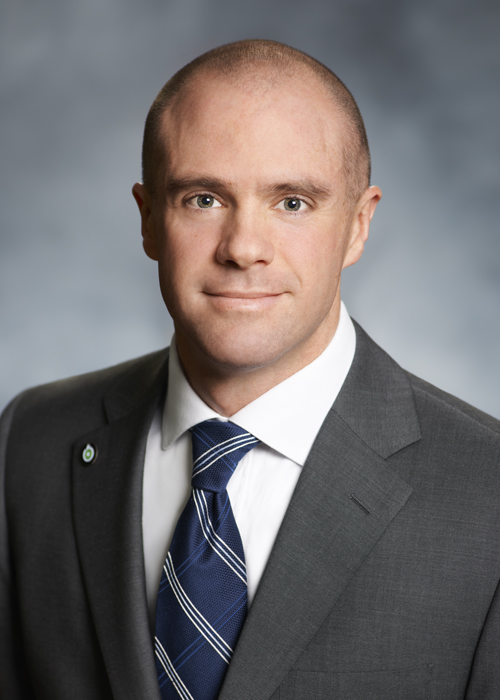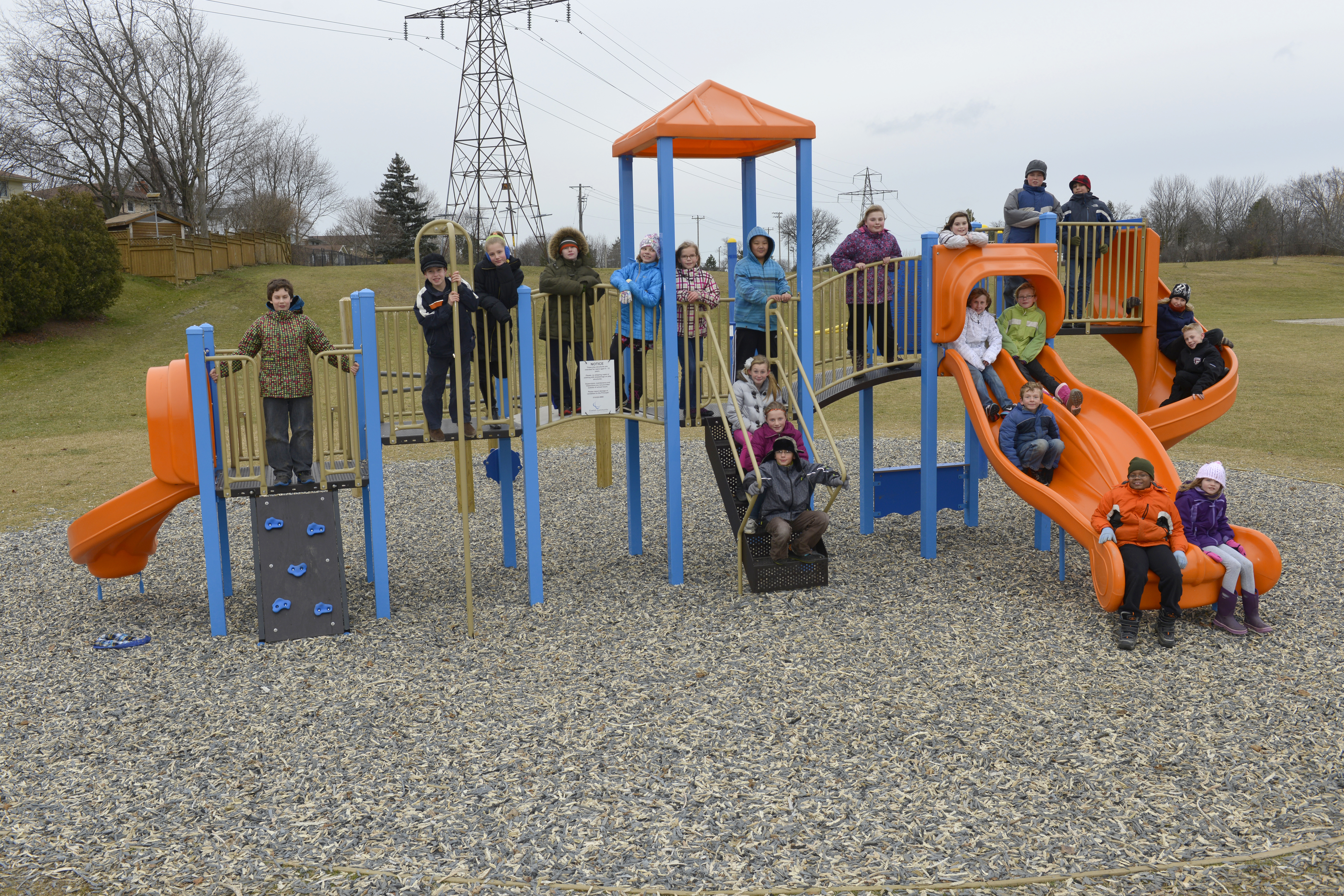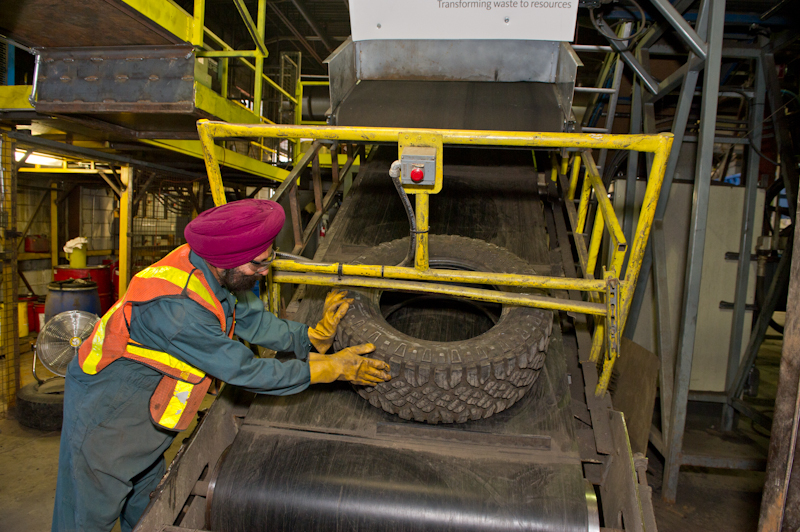

Imagine there was just one store where you could go buy your scotch. That would be hell.
My name is Andrew and I have something to confess. ‘Cause I’ve got some sins. It’s going to get a little uncomfortable and a little ugly, so strap yourselves in and have the children leave the room so that we can talk about what’s going on here in Ontario with tires.
What we’re going to talk about are our sins here with tires in Ontario. I’m guilty of treating our stewards like customers; I’m guilty of trying to reduce their costs; we’re guilty of achieving 100 per cent diversion of tires in this province since the program launched; we are guilty of having cleaned up 1.6 million tires from piles across the province; we are guilty of creating an operational system that’s tripled the hauling capacity in the province of Ontario, doubled the recycling capacity and tripled the amount of recycled rubber going to Ontario manufacturers making finished goods.
We are guilty of supporting those businesses and having created over 200 direct new jobs—and made somewhere in the neighbourhood of $70 million in new investments for Ontario. We are guilty of providing research and development grants that lead to success across the province; and we’re guilty of reducing our costs year after year to the point that in 2013 and 2014 we reduced the fees that we charged for passenger tires. And we will be guilty again this year when we again reduce those fees because of the efficiencies that we have realized in the marketplace. That’s us. And that’s what we’ve achieved because we’re BAD! You may call me Cane the Destroyer of Worlds ‘cause we’re the only guys in the game.
We came into a marketplace that functioned, that saw 50 per cent of tires leaving the province every year—many of those tires going into cement kilns or daily alternative cover for landfill, so we work with those industry players and recyclers and haulers to create made in Ontario solutions for recycling those tires made in Ontario; and to create made in Ontario markets to consume those products. We’re guilty of working with municipalities and providing grants to use those products in a way that creates sustainable demand; and we’re guilty of talking to our service providers to try to figure out how we can find a path forward through this challenging business and legislative environment in a way that benefits both of us.
I’m not saying it’s been easy, especially to find those cost reductions. We consulted with our stakeholders for a year and a half before we actually implemented those reductions. Now we have a three-year strategy to give our service providers a vision for where we’re going. Shame on us for not making quick changes and pulling out the rug from under them. We want to have a vibrant sector that’s profitable, self-sustainable and not reliant on us.
I’m guilty of trying to work myself out of a job—and my wife would say that isn’t a bad thing, actually. We see a future where scrap tires have a positive value, and the manufacturing industry is growing to a point where the economics stand on their own. There are no disposal fees, there are no tip fees, and there are no market incentives—because those manufacturers work with their suppliers to source recycled rubber to go into their products that they then sell out into the marketplace. There are products on the shelves today in this province for major retailers that are the results of partnerships we’ve had with manufacturers and recyclers that you don’t know about because those manufacturers are incorporating the recycled materials like any other material. It’s displacing virgin material that costs two or three times as much.
While creating economic opportunities and jobs here in Ontario, we have a lot to beg your forgiveness for. I hope you’ll forgive us if once in a while we pat ourselves on the back for achieving that success.
At OTS we believe that absolutely producers should have choice. Absolutely. My personal view is that provided the program is being run well, and is being run like a business, and being run with a focus on the bottomline and the objectives that we’ve been tasked to achieve by the minister. So, the savings that result from having competing programs are next to zero.
In 2014, the administrative costs for OTS were six per cent, and my goal is to continue to drive that number down. So we’re always asking ourselves, “do we need to spend this, or can we just steal pens from that conference?” They’re great little pens by the way, thank you.
How do we minimize costs? How do we treat our stakeholders with respect? How do we treat our oversight folks with respect? How do we work together to achieve the environmental, economic and program objectives that people expect from us, in a way that makes if not everybody happy, nobody mad. What we want to do is be able to leave behind an industry that can operate without our support.
We’re not there yet.
Scrap tires do have a value in Ontario because the market has built up to a point where we have more recycling capacity than tires. You won’t find a lot of tires being dumped illegally here because that tire costs the recycler money: A $1.50 or $2 on the ground? He’s going to pick that up and put it into his facility—and that market dynamic changes things a bit. This competitive market landscape has evolved over time and we’ve evolved our program with it.
Not enough money can be just as damaging as too much money, so we’re trying to find that balance, so that what’s going on the marketplace is sustainable and fairly competitive because we believe that a competitive recycling marketplace is where the real action is at. It’s where the real efficiencies will be realized, the real environmental gains will be realized, and it’s where the real economic gains will be realized. We are here to support the industry in achieving those objectives because their success is our success—and their success is contingent upon us providing customers with clarity about where we’re going, involving them in that discussion. There needs to be visibility on their behalf to show how things are changing, and that’s not easy. The rules change. And sometimes very quickly. Sometimes with no advance warning. Sometimes the rules are changed by the regulator with 15 days notice and you have to adapt and accommodate. But notwithstanding, the business rules should be the same. And they should be clear and well understood.
How do you manage data in a competitive market? How do you manage compliance? We’ve heard of ideas for a few models. Perhaps a body with regulatory authority that can police the industry? These are all things that are extremely doable.
But to what end? And why?
We are not packaging! And I’ll say it again, tires are not packaging. What are we trying to do when we move away from a model that has reduced costs, increased capacity, driven value into recycling and improved the marketplace? Which of those mistakes are you trying to undo, and why? Because we start to get a little paranoid: We think, “Is it us? Are we not showering enough?” People look at us and say we’ve got to do away with this program, but we think we’re doing a pretty good job.
We’re guilty of pursuing free-riders to the extent of our ability, and we’re guilty of pursuing folks in the recycling industry not playing by the rules, and who are not compliant with the laws of the land, and not compliant with our vendor requirements, which are compliance driven. We work closely with the regulator to try to get support that we need to ensure there’s a level playing field out there, but how do we change that approach? How do we change that in a way that ensures an even more even playing field?
To date, the regulator has proved unwilling or unable to step into that role. So, do we really think that having four or five programs is going to change that, when all they’ve got right now is one to work with? I’m not convinced. I don’t see it. And the reason why is very valid: The regulator has other jobs; somebody is dumping something in that river over here, and over there someone has 100 more tires on their property than they should. Where are they going to put their time and attention? It’s a risk-based matrix. Absolutely understandable. But when you’ve got one entity working with you, you have the ability to say we need to do something about that because that’s not fair to all the other guys living by the law of the land. And we continue to work on that.
Take data management, say my customer list. In this competitive environment, is this going to be publicly available? A lot of these things have to be asked and answered, and I don’t think there’s a lot of agreement on how this works.
And there is the experience of other jurisdictions as we work on this. I can speak to you about multiple tire programs in Europe—France, Spain and Italy being the three biggest programs. Seven programs in Italy, two in Spain and three in France. Each place has one big program, Italy with one that has 65 to 70 per cent of the marketplace. They collected 15 per cent more material last year than they needed to. And the reason that they did that is the other programs are free-riding off their success. So, while there are methods to deal with it, there’s been a lack of enforcement, so how do you deal with that going forward. The theory is sound, but it’s the execution where we’ve seen problems.
As long as another program comes along with the same framework, you’re going to get pretty much the same outcome we’ve had. Maybe not as good as we’re doing because they’re starting up, but you’re going to get similar outcomes.
So, why create that opening? The ISP mechanism is a mechanism for producer choice. It took a long time to get to that point, but that’s where we’re at right now. ISPs have come along and said they’re not happy with where they are. I used to be a producer. I worked for Wal-Mart Canada for eight years, and there were some programs that I was very unhappy with, and there were some programs that were well taken care of and I trusted those programs—they took care of me and handled things.
So it is more about the entity running the program and the design of the program than it is about whether fundamentally I want to have choice. It’s like serving your customers. If you serve your customers well, they’re going to stay with you. I don’t fear competition…at all. I think we have an option that people will continue to choose. They will stay with us and will continue to make their services and experiences with us and better and better—that’s our stewards, that’s our haulers, that’s our recyclers, that’s our manufacturers. What I do fear is when our competitors have an edge because they don’t play by the same rules. As long as the rules are enforced going forward, OK, but I just don’t understand how.
This article first appeared in the April/May 2015 issue of Solid Waste & Recycling Magazine.